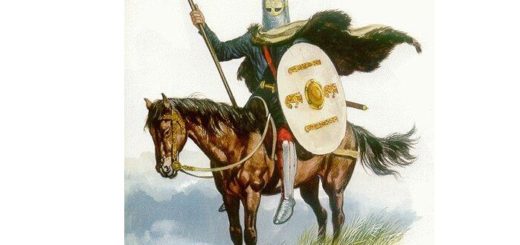Ancient Symbol Fleur-de-lis: It’s Meaning And History Explained
Fleur-de-lis, ( French: “lily flower”) is an ancient symbol that has long been associated with French royalty. Depicting a stylized lily or lotus flower we encounter the emblem as in many places across the world.

What makes the Fleur-de-lis symbol special is how it has been used in different contexts. Is has represented peace, war, religion, politics, royalty and more.
For example, Joan of Arc carried a white banner that showed God blessing the French royal emblem, the fleur-de-lis, when she led French troops to victory over the English. The Catholic Church has used the Fleur-de-lis emblem for many years. The lily flower was a symbol of the Holy Trinity as well as an emblem of the Virgin Mary.
A number of military units use the symbol’s resemblance to a spearhead to identify martial power and strength.
Fleur-de-lis should not be confussed with the Flower of Life, that is ancient sacred geometry symbol and blueprint of the universe.
The fleur-de-lis symbol was sporadically used in Babylonian, Indian, Egyptian and Roman architecture, but it is most associated with French royalty and the Church.
The fleur-de-lis’ symbolic origins with French monarchs may stem from the baptismal lily used in the crowning of King Clovis I.
An ancient legend tell, a golden lily flower given at his baptism to Clovis, king of the Franks (466–511), by an angel or even the Virgin Mary. The lily was said to have sprung from the tears shed by Eve as she left Eden. The lily flower was a symbol of his purification upon his conversion to Christianity.
According to another legend, Clovis adopted the symbol when water lilies showed him how to safely cross a river and thus succeed in battle.
The symbol has been regarded as a sign of purity ever since antiquity. The Roman Catholic Church adopted the Fleur-de-lis symbol to represent Virgin Mary. When Pope Leo III in 800 crowned Charlemagne as emperor, he is reported to have presented him with a blue banner covered (semé) with golden fleurs-de-lis.
The symbol was later adopted by many European noble families, most notably the French monarchy, to establish an association with the Church.
In the twelfth century, either King Louis VI or King Louis VII became the first French monarch to use the fleur-de-lis on his shield.
In the 14th century, the fleur-de-lis was often incorporated into the family insignia that was sewn on the knight’s surcoat, which was worn over their coat of mail, thus the term, “coat of arms.” The original purpose of identification in battle developed into a system of social status designations after 1483 when King Edmund IV established the Heralds’ College to supervise the granting of armor insignia.
Knowledge of Fleur-de-lis crossed the Atlantic when French settler reached the New World. Their presence on North American flags and coats of arms usually recalls the involvement of French settlers in the history of the town or region concerned, and in some cases the persisting presence there of a population descended from such settlers.
The fleur-de-lis symbol also appears on the Canadian coat of arms, the flag of Quebec.
In modern times, we encounter the fleur-de-lis symbol in a variety of areas. It is a symbol associated with military, sport, education, scouting and literature.
Copyright © AncientPages.com All rights reserved. This material may not be published, broadcast, rewritten or redistributed in whole or part without the express written permission of AncientPages.com



 Creators of mankind
Creators of mankind Description of “Tall white aliens”
Description of “Tall white aliens” Where they came from?
Where they came from? About hostile civilizations
About hostile civilizations The war for the Earth
The war for the Earth “Tall white aliens” about eternal life
“Tall white aliens” about eternal life Video: “Nordic aliens”
Video: “Nordic aliens” Aliens
Aliens Alien encounters
Alien encounters The aliens base
The aliens base UFO
UFO Technology UFO
Technology UFO Underground civilization
Underground civilization Ancient alien artifacts
Ancient alien artifacts Military and UFO
Military and UFO Mysteries and hypotheses
Mysteries and hypotheses Scientific facts
Scientific facts


















